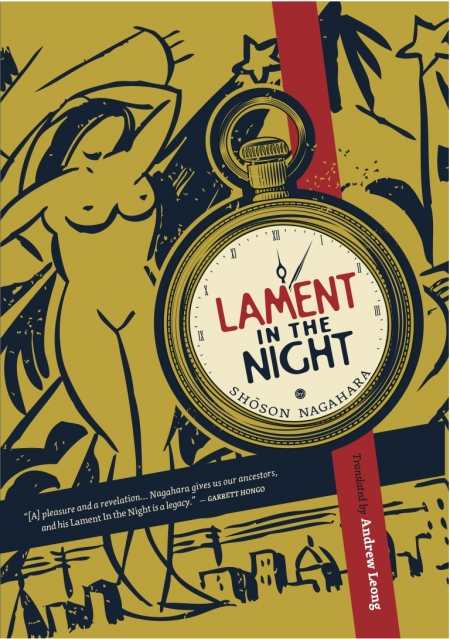Lament in the Night
Obscurity is a hard fate to escape, something the author of Lament in the Night knew all too well. But nearly one hundred years after his stories were first published in Japanese-language newspapers in California, Shoson’s work is being brought out in English. Collected together, they give an astonishing glimpse of the precarious uncertainty facing those who planned to make it rich in California only to end up stranded there, penniless and desperate.
Think of this as the Asian version of The Grapes of Wrath. In miniature. And reverse. Rather than heading west from the Dust Bowl, Shoson’s characters come east across the Pacific with dreams of piling up a fortune for themselves in this country.
They’re in for a shock.
In the first story, “Lament in the Night,” a thirty-year-old migrant worker named Sakuzo wanders aimlessly around a nameless city, weighed down by an overwhelming sense of gloom and unable to solve the mystery that is America. Although he picks up odd jobs, he’s already slipped into a way of life in which adultery and theft are just means of survival, like cadging food scraps off the floor of the public market and bumming nickels off strangers.
In the second story, “Tale of Osato,” a young bride of eighteen comes to America with her husband, a much older man of forty who’s already lived in this country picking grapes and working on the railroads and in the copper mines. After they disembark and move to LA, it falls to Osato to keep them from starving. Her stoic perseverance as “a woman in the floating world” of vagrants, gamblers, and barmaids allows her to forge ahead, despite one misfortune after another, until she owns a speakeasy in Prohibition America.
Both stories share themes of isolation and despair. Both are told from the perspective of a younger Japanese immigrant looking at the failures of previous arrivals. Not much is known about the author or even what happened to him. The pen name Shoson means “twilight village.” He may have vanished, but thanks to the able translation by Andrew Leong, his life’s work lives on in this spirited collection.
Reviewed by
Trina Carter
Disclosure: This article is not an endorsement, but a review. The publisher of this book provided free copies of the book to have their book reviewed by a professional reviewer. No fee was paid by the publisher for this review. Foreword Reviews only recommends books that we love. Foreword Magazine, Inc. is disclosing this in accordance with the Federal Trade Commission’s 16 CFR, Part 255.

